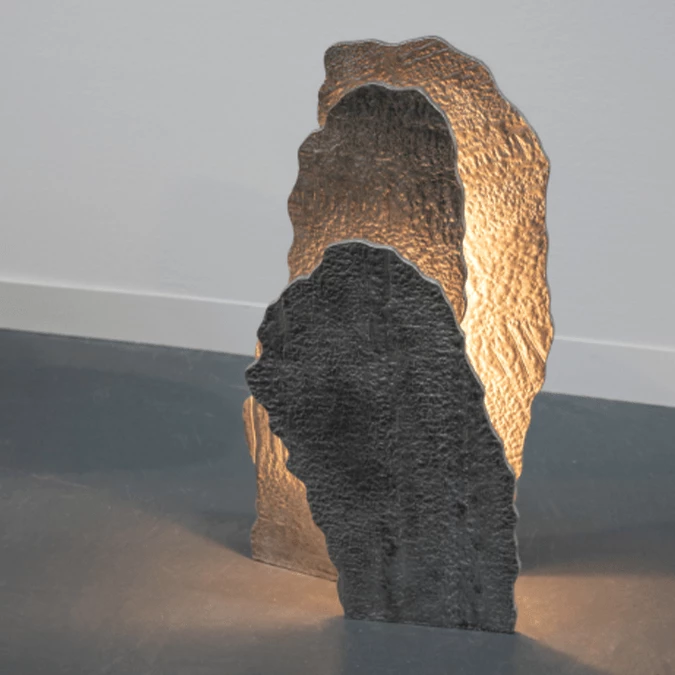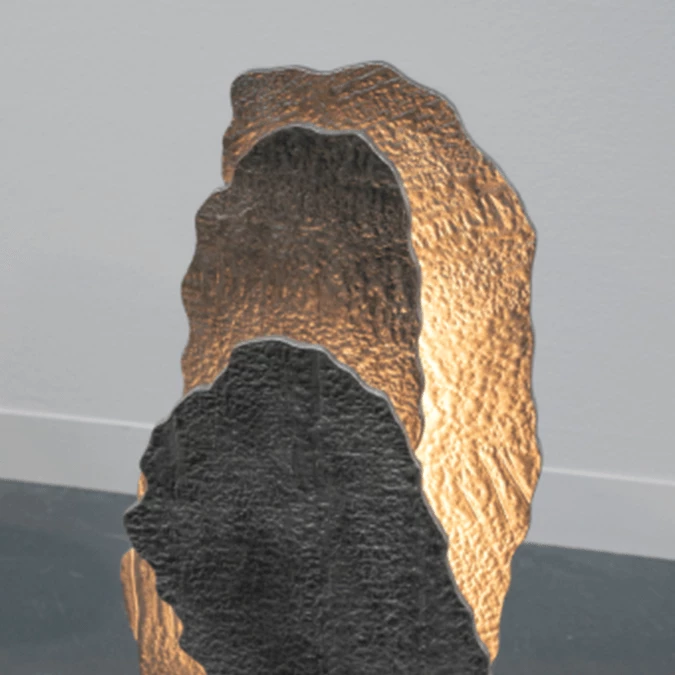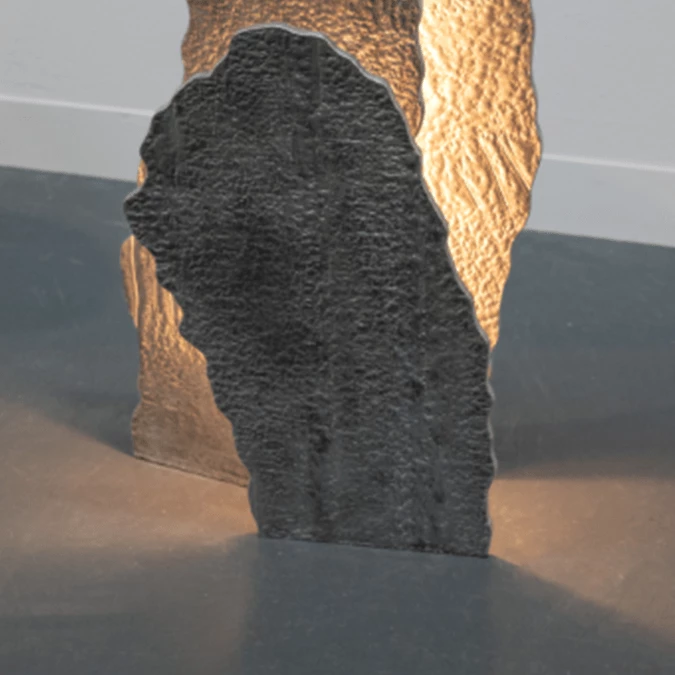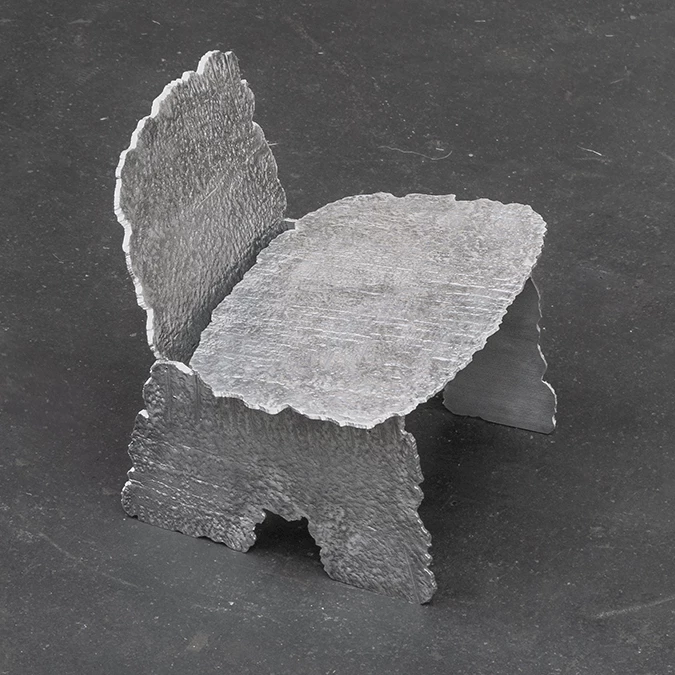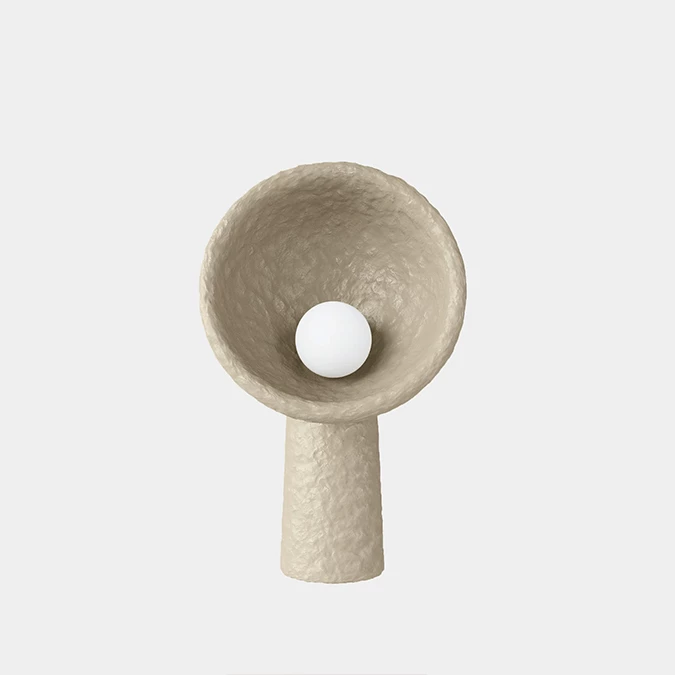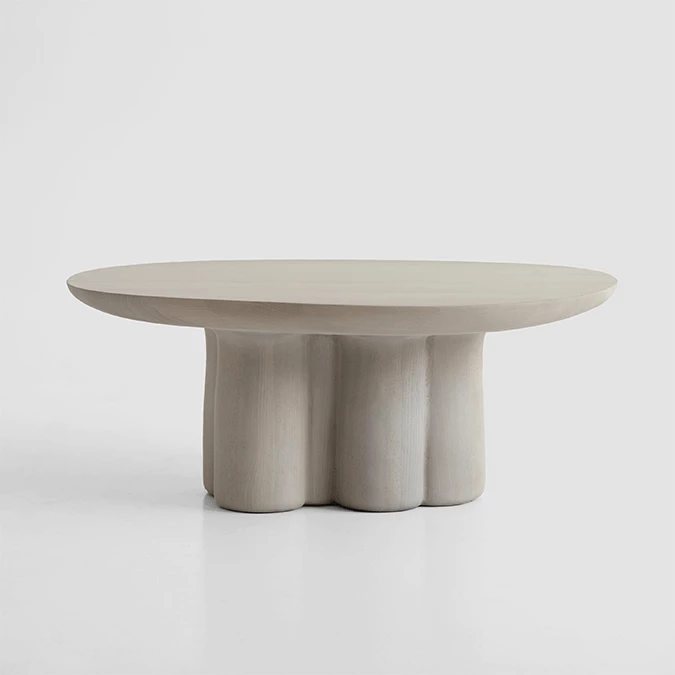In the early stages of aluminium production, factories cast molten aluminium into massive blocks weighing in at over 25 tonnes. These blocks are clad with undulating, organic textures that are a result of the casting process. In the preparation of the blocks to be sent to other factories, the sides are cut off, leaving behind thin plates with organic, undulating surfaces–known as “crusts”. ThusThat, in a continuation of their exploration of industrial narratives, use these crusts to create a series of pieces that reflect the unexpectedly raw backstory to an everyday material, and its role in our sustainable future. The edges are jagged and roughly cut, resulting in rugged forms that seem to have been themselves byproducts of some industrial mechanisms. The piece illuminates silhouettes of rough aluminium, suggesting that behind our clean and polished materials lie more raw origins, stemming from the land itself. ThusThat believes that an awareness of material origins–and building an appreciation of their raw aesthetics–is important to creating balanced systems of production and consumption, and is crucial to building a more harmonious way of living with our planet.
| Category: | Sculpture |
|---|---|
| Length: | 45 Cm |
| Height: | 80 Cm |
| Width: | 26 Cm |
| Material: | Byproduct aluminium smelter offcuts, steel fixtures, LED tubes |
| Framed: | No |
| Edition: | 1 of 3 |
| Country: | Netherlands |
| Shipping from: | Saudi Arabia |
Studio ThusThat
ThusThat explores the hidden backstories of everyday materials. Led by Kevin Rouff and Paco Boeckelmann, the studio bridges design with innovations in material science, to create statements that are strong, and direct in form, keeping the complexity packed within the materiality itself. Their work primarily focuses on the use of uncommon materials such as industrial wastes, to suggest alternative futures. ThusThat works within a range of scales from collectible design objects, interior design, and architecture. Their projects with wastes of the mining and metallurgy industries have received international acclaim and have been globally exhibited, with pieces in the permanent collection of the London Design Museum and Desig Museum Gent.
